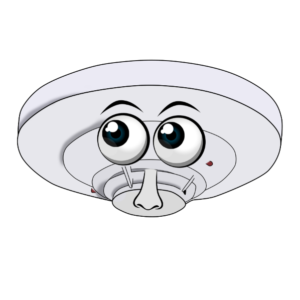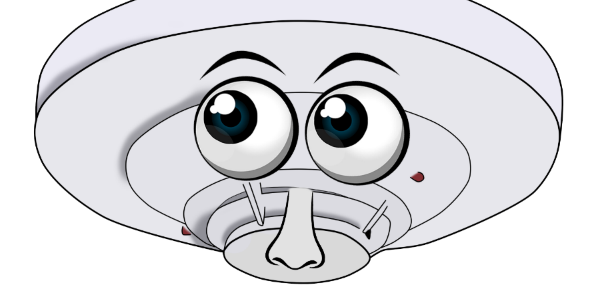
- Any non-sprinklered building
- Any non-sprinklered room
- Non-sprinklered electrical or telecommunication rooms
- Smoke detectors for fire doors that are held open
- Smoke detectors for fire dampers that require a smoke detector signal to close
- Air handing units that exceed 2000CFM or 15000CFM.
- Alarm control equipment in unattended locations
- Elevator lobbies, elevator machines, or hoistways (code permitting)
- Day cares, specifically with kids under the age of 5 years
- Pre-action or deluge applications, cross zoning
- Atriums and surrounding areas for smoke purge applications
And of course, residential applications such as multi-family living, hotel, independent living, dormitory, and others will always require smoke alarms in all sleeping rooms and within 15 feet of the bedroom doors.
So, at a minimum, these locations generally will require smoke detection.
In review of the NFPA 72 document, 72 does allow for additional smoke detection if a building owner chooses to add additional smoke detectors. Remember that building codes are a minimum and a building owner or designer may request additional smoke detection if desired. NFPA 72 17.5.3.3.1. titled Nonrequired Coverage does discuss and allow for this request. However, there must be reason in the submitted design that documents the objective for additional smoke detection coverage.
Why would a building owner or designer request smoke detection when it is not required by the code?
- Smoke detectors offer early warning. A smoke detector is a fast responding sensor in comparison to heat detection used with sprinkler heads. Often with the use of early warning devices a possible disaster can be adverted to a minor incident with minimal damage or disruption.
- Smoke detectors are your eyes and noise when you are not around. We all have those areas of the building that are infrequently visited. Unattended locations can lead to fast growing fires and lead to unmanageable circumstances. A smoke detector can monitor that area that is infrequently visited.
- The smallest fire can contaminate and damage valuable contents such as computers, networks, vintage collectables, furniture, food, fabrics, paper goods, money, medicine, and other soft materials that spoil, absorb smoke and burn quickly.
- A small fire can lead to lost business opportunities, operations, future revenue, lost customers, inventory, and your personal income.
- A building fire can lead to possible injuries, fatalities and law suits. These events can also lead to negative publicity and a negative corporate image suggesting that public safety was disregarded.
- Avoiding sprinkler system activation. At times water can be damaging to the building and its contents. An owner may want to achieve early warning and eliminate the threat of fire prior to the activation of the sprinkler system.
- Early warning is being “GREEN”. Early warning avoids use of water, fire trucks, fuel, emergency resources, energy, service vehicles, loss of heat, cooling, productivity, time, garbage, displacement, carbon emissions, or reconstruction.
- Peace of mind and protecting life. Your place of business is safe and under constant supervision.
- Early warning and needed time for personal to help occupants who are not self-preserving such as the elderly, the hospitalized, institutionalized, the sick, infants and the incapacitated.
Safety for first responders. Attending to fire in its earliest incipient stages is less threatening than a fully involved fire with toxic gases, extreme heat and a weakened building structure. - Perhaps you are a survivor of a fire and have firsthand experience of the danger from a fire. You understand the dangers and the severity a fire can bring. Fire burns and fire gases can kill. Smoke detectors do save lives. Ask for smoke detection if you want it and value their life safety capabilities.
- Redundant detection. A smoke detection system is not subject to inoperable conditions due to a lack of water, a broken sprinkler pipe, frozen pipe, a shut control value, or a broken water flow switch. Smoke detection is a distributed system with redundancy and can serve as a second backup to a by passed sprinkler system.
- Intentional arson concerns. Just like a video camera, a smoke detector can be a deterrent not to initiate a fire. Whether it is a disgruntled employee, family member, tenant, carelessness, terrorist act or vandalism, it is the real world. Society is unpredictable and designers should be applying some thought to the unforeseen. If the intent to harm is premediated and an individual has some understanding of fire protection concepts, one can cause great harm with the use of fire. However, with a fully smoke protected building an arson act may be deterred.
In summary, smoke detectors are fast responding fire alarm sensors that can summon first responders quickly when seconds count.



